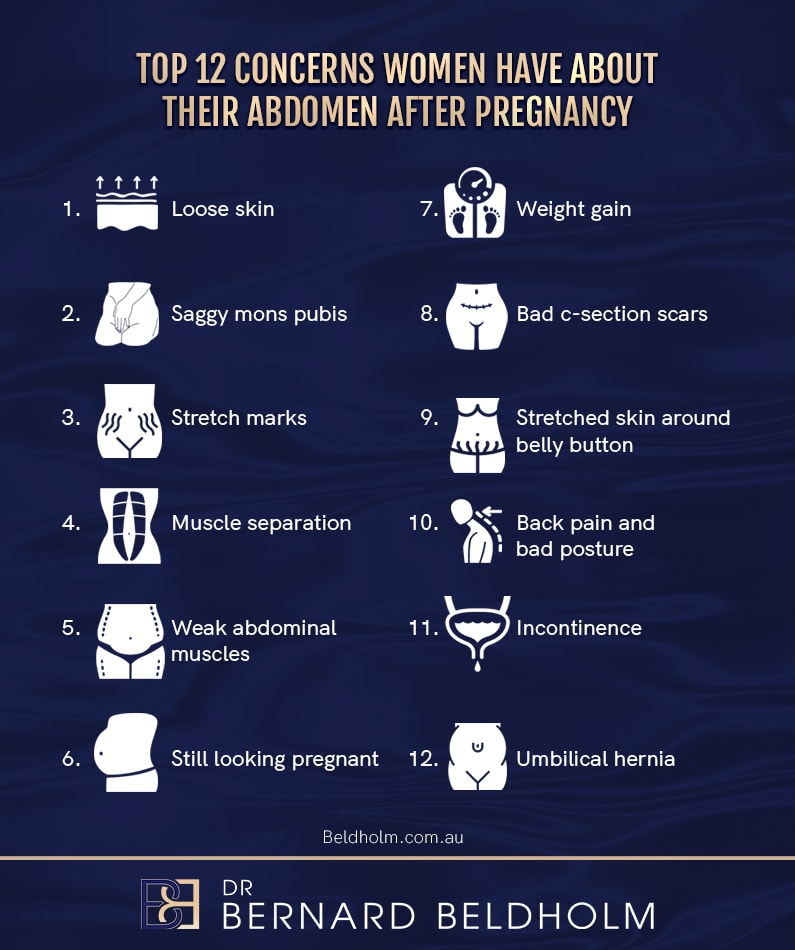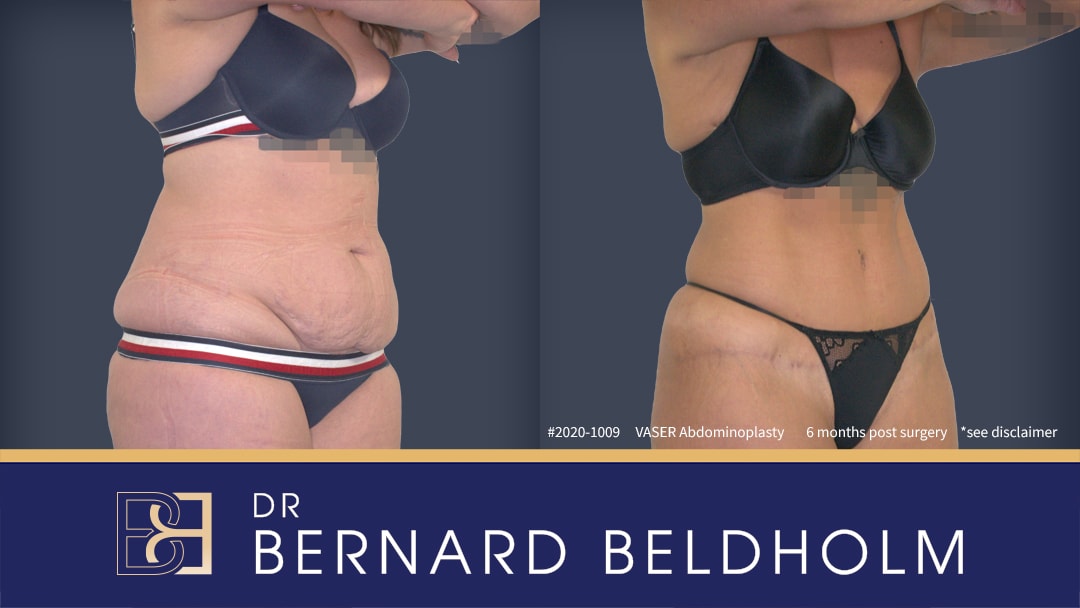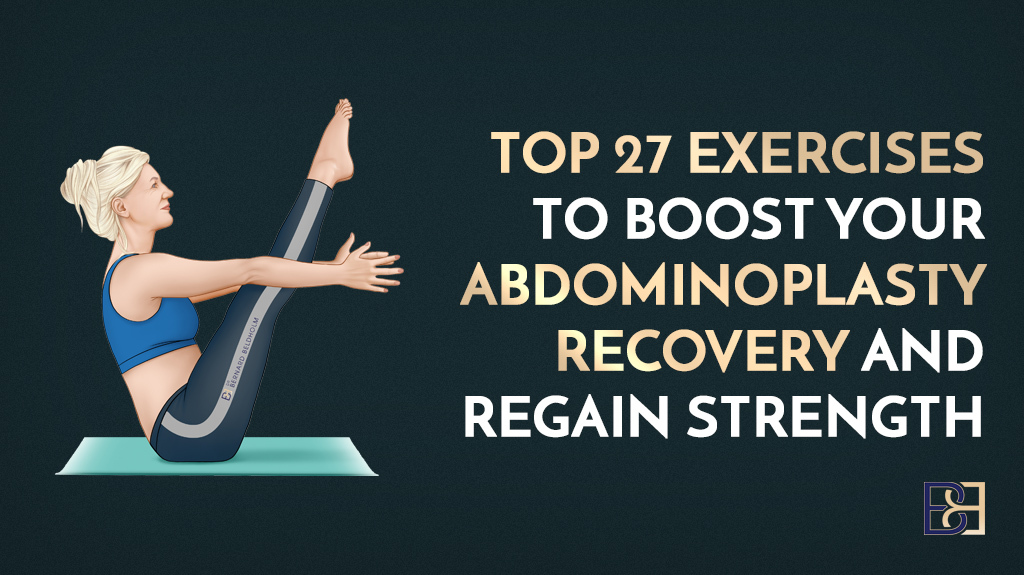Key Takeaways
- Postpartum women often deal with abdominal changes like bulging, weak core muscles, and loose skin due to stretching, hormonal shifts, and weight gain.
- Diastasis recti is a common condition where abdominal muscles separate, leading to noticeable bulges, but it can often resolve with targeted exercises or physical therapy.
- Effective recovery involves a mix of good habits, specialised exercises, postpartum belly wraps, and, in severe cases, surgical options like abdominoplasty.
Common Abdominal Concerns Post-Pregnancy

Disclaimer: Operation performed by Dr Bernard Beldholm. Adult content, surgery has risks; individual results vary, seek 2nd opinion. Please see the full disclaimer.
Book your appointment online now
Postpartum women often experience significant physical changes, particularly in the abdominal area. It’s not unusual to still look a few months pregnant long after childbirth, as the body takes time to recover. The postpartum belly can be affected by various factors, including hormonal changes and skin stretching, which can lead to a belly bulge.
Another common concern is weak core muscles, which may be related to incontinence and other issues. This can make daily activities challenging and affect overall well-being. Additionally, the appearance of excess fat in areas like the mons pubis can be distressing for many women.
Whether it’s through targeted abdominal exercises, wearing a postpartum belly wrap, or seeking professional help, there are effective ways to treat the function of the abdominal area after pregnancy.

Summary of common concerns after pregnancy:
- Loose skin
- Stretch marks
- Muscle separation
- Weak abdominal muscles
- Still looking pregnant
- Weight gain
- Mons pubis
- Bad c-section scars
- Stretched skin around belly button
- Back pain and bad posture
- Incontinence
- Umbilical hernia
Understanding Diastasis Recti

Diastasis recti occurs when the abdominal muscles separate along the midline as the belly stretches during pregnancy. This separation of the rectus abdominis muscles can lead to a noticeable bulge and prevent the stomach from shrinking back to its pre-pregnancy state.
Fortunately, in many cases, diastasis recti resolves within a few months to a year postpartum. However, for some women, the separated stomach muscles may persist, requiring targeted interventions like specific abdominal exercises or physical therapy to facilitate recovery.
Signs and Symptoms of Diastasis Recti

Disclaimer: Operation performed by Dr Bernard Beldholm. Adult content, surgery has risks; individual results vary, seek 2nd opinion. Please see the full disclaimer.
One of the most telling signs of diastasis recti is a gap between the abdominal muscles or a canoe-shaped pouch along the midline. This can be accompanied by a bulge in the abdomen that becomes more pronounced during certain movements.
Other symptoms include lower back pain, pelvic floor issues, and weakness while lifting objects. Monitoring for any bulging or coning of the abdominal wall during movements is essential, as this can indicate the need for professional assessment and appropriate interventions.
Causes of Abdominal Separation
The development of abdominal separation, or diastasis recti, is influenced by several factors. As the fetus grows, it puts pressure on the abdominal muscles. This pressure results in the muscles stretching and separating. Hormonal shifts during pregnancy also contribute to the stretching of connective tissue, increasing the risk of separation.
Weight gain during pregnancy and having multiple pregnancies further raise the risk of developing diastasis recti. Additionally, individuals over the age of 35 are more susceptible to this condition due to the cumulative strain on the abdominal muscles.
Diagnosing Abdominal Separation
Diagnosing diastasis recti typically involves a physical assessment by a healthcare provider, such as a doctor, midwife, or physiotherapist. They will measure the gap between the abdominal muscles and evaluate the severity of the separation.

If abdominal muscle separation is detected, you may be referred to a specialist physiotherapist who can develop a personalized exercise program.
Treatment Options for Diastasis Recti
There are several approaches to treating diastasis recti, ranging from abdominal exercises and physical therapy to surgical options.
Understanding the best treatment for your specific situation is crucial for effective recovery.
Effective Abdominal Exercises

Strengthening the core and closing the gap caused by diastasis recti can be achieved through effective abdominal exercises. Pelvic tilts and abdominal bracing exercises are highly recommended, as they target core muscles without straining the lower back.
Performing pelvic tilts on hands and knees helps maintain proper spine alignment while engaging the core. Toe taps lying on the back are another great way to strengthen the core muscles. Daily practice of these exercises can significantly increase core strength and support postpartum recovery.
Role of Physical Therapy

Physical therapy is crucial in treating diastasis recti. Specialized physiotherapists create personalized exercise programs, offering focused guidance and support for effective recovery.
Surgical Options
In severe cases where diastasis recti significantly impacts daily activities, surgical options like abdominoplasty may be considered. This procedure not only tightens the abdominal muscles but also removes excess skin, providing a more toned appearance.

Surgery is often the most effective solution for persistent loose abdominal skin. Lipo-abdominoplasty can treat multiple issues simultaneously, such as fat reduction and muscle repair.
Loose Skin

Disclaimer: Operation performed by Dr Bernard Beldholm. Adult content, surgery has risks; individual results vary, seek 2nd opinion. Please see the full disclaimer.
Loose skin around the umbilicus are common concerns after pregnancy due to skin stretching and loss of collagen. Staying well-hydrated and using topical products containing collagen, vitamin C, and retinoids can help increase skin firmness.
For some women, surgical options like a tummy tuck are the most effective way to treat loose skin. This procedure can tighten the skin around the umbilicus (belly button), making it look flat and smooth.
C-Section Scars and Recovery
Caring for a C-section incision prevents infections and ensures a smooth recovery. Keeping the area clean and dry, along with wearing loose clothing, can prevent irritation and discomfort.
Belly binding helps reduce pain and provides support during C-section recovery. Doctors frequently recommend postpartum belly wraps after major abdominal surgery, including C-sections.
Preventing Abdominal Issues During Pregnancy
Strengthening core muscles early and exercising an prevent abdominal issues during pregnancy. Pelvic tilts and exercises targeting deep abdominal and pelvic floor muscles, core strength, and diastasis recti.
Avoiding excessive strain on the abdominal muscles, such as through heavy coughing or straining, is also important. Pregnant women should be cautious with their movements and seek professional advice if they experience discomfort.
The Role of Postpartum Belly Wraps

Postpartum belly wraps support abdominal muscles and promote healing after childbirth. Although not a cure for diastasis recti, they should be used properly to avoid complications.
Start at the hips and wrap upwards, ensuring it is snug but not too tight, to use a postpartum belly wrap effectively. Opt for soft, elastic fabric instead of trainers or corsets for comfort and support.
Importance of Healthy Habits Post-Pregnancy

Good eating habits post-pregnancy are crucial for overall recovery and well-being. A nutrient-rich diet supports health and facilitates weight loss, while cardiovascular workouts and core exercises like pelvic tilts and planks strengthen core muscles.
Patience is key, as extreme weight loss can cause increased fatigue and negatively impact mood. Waiting at least six weeks before starting a low-calorie diet is recommended.
When to Seek Professional Help

Seek professional help if ongoing abdominal issues or noticeable changes in stomach muscles occur. Healthcare providers can diagnose conditions like diastasis recti and suggest appropriate treatments.
Surgery may be an option if your condition severely impacts daily activities. Follow-up appointments after a C-section are crucial for monitoring the healing process.
Dr Bernard Beldholm’s Final Conclusion
Navigating the changes in your post-pregnancy body can be challenging, but understanding common abdominal concerns and their solutions can make the journey easier. From diastasis recti to loose skin and C-section scars, there are effective treatments and practices to help you recover and regain strength. Remember to be patient with your body and seek professional advice when needed.
Frequently Asked Questions
What is the primary reason women seek an Abdominoplasty (tummy tuck) after pregnancy?
Women primarily seek tummy tuck surgery after pregnancy because they’re dealing with loose abdominal skin that just won’t bounce back or significant muscle separation.
How can an umbilical hernia be repaired during a Abdominoplasty ?
You can totally get an umbilical hernia repaired during your Abdominoplasty . The surgeon typically handles both issues at once, making it super convenient for you!
What can help prevent stretch marks during pregnancy?
Keeping your skin hydrated with lotion can significantly increase its elasticity, helping to prevent stretch marks during pregnancy. Silicone sheets are another effective option, and many women find bio-gel to be beneficial as well.
How long does skin continue to shrink after childbirth?
Your skin can keep shrinking for up to two years after childbirth, so just give it some time to bounce back!
What is diastasis recti?
Diastasis recti is when your abdominal muscles separate along the midline, often happening during pregnancy as your belly stretches. It’s pretty common, so if you’re dealing with it, you’re not alone!






